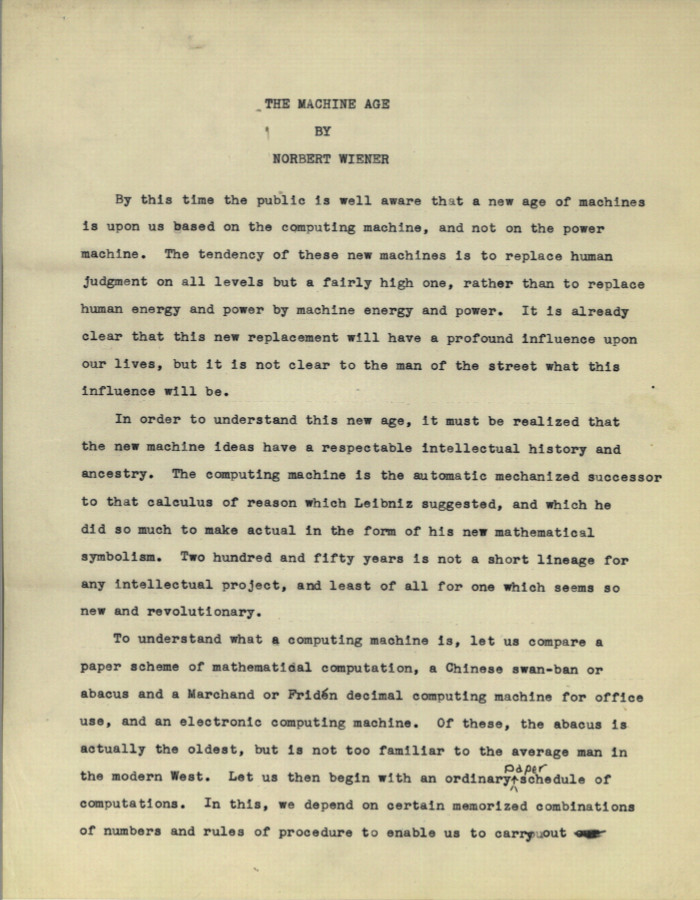Brian Rotman: Becoming Beside Ourselves: The Alphabet, Ghosts, and Distributed Human Being (2008)
Filed under book | Tags: · affect, alphabet, body, computing, gesture, god, language, mathematics, networks, posthuman, representation, self, semiotics, speech, subjectivity, technology

Becoming Beside Ourselves continues the investigation that the renowned cultural theorist and mathematician Brian Rotman began in his previous books Signifying Nothing and Ad Infinitum…The Ghost in Turing’s Machine: exploring certain signs and the conceptual innovations and subjectivities that they facilitate or foreclose. In Becoming Beside Ourselves, Rotman turns his attention to alphabetic writing or the inscription of spoken language. Contending that all media configure what they mediate, he maintains that alphabetic writing has long served as the West’s dominant cognitive technology. Its logic and limitations have shaped thought and affect from its inception until the present. Now its grip on Western consciousness is giving way to virtual technologies and networked media, which are reconfiguring human subjectivity just as alphabetic texts have done for millennia.
Alphabetic texts do not convey the bodily gestures of human speech: the hesitations, silences, and changes of pitch that infuse spoken language with affect. Rotman suggests that by removing the body from communication, alphabetic texts enable belief in singular, disembodied, authoritative forms of being such as God and the psyche. He argues that while disembodied agencies are credible and real to “lettered selves,” they are increasingly incompatible with selves and subjectivities formed in relation to new virtual technologies and networked media. Digital motion-capture technologies are restoring gesture and even touch to a prominent role in communication. Parallel computing is challenging the linear thought patterns and ideas of singularity facilitated by alphabetic language. Barriers between self and other are breaking down as the networked self is traversed by other selves to become multiple and distributed, formed through many actions and perceptions at once. The digital self is going plural, becoming beside itself.
With a Foreword by Timothy Lenoir
Publisher Duke University Press, 2008
ISBN 0822342006, 9780822342007
176 pages
Commentary (Ben Pritchett, Mute)
Review (Stevan Harnad, Times Literary Supplement)
Marysia Lewandowska, Laurel Ptak (eds.): Undoing Property? (2013)
Filed under book | Tags: · art, commons, computing, curating, gentrification, immaterial labor, music, piracy, political economy, property, publishing, theory

“Undoing Property? examines complex relationships inside art, culture, political economy, immaterial production, and the public realm today. In its pages artists and theorists address aspects of computing, curating, economy, ecology, gentrification, music, publishing, piracy, and much more.
Property shapes all social relations. Its invisible lines force separations and create power relations felt through the unequal distribution of what is otherwise collectively produced value. Over the last few years the precise question of what should be privately owned and publicly shared in society has animated intense political struggles and social movements around the world. In this shadow the publication’s critical texts, interviews and artistic interventions offer models of practice and interrogate diverse sites, from the body, to the courtroom, to the server, to the museum. The book asks why propertization itself has changed so fundamentally over the last few decades and what might be done to challenge it. The “undoing” of Undoing Property? begins with the recognition that something else is possible.”
With contributions by Agency, David Berry, Nils Bohlin, Sean Dockray, Rasmus Fleischer, Antonia Hirsch, David Horvitz, Mattin, Open Music Archive, Matteo Pasquinelli, Claire Pentecost, Florian Schneider, Matthew Stadler, Marilyn Strathern, Kuba Szreder, Marina Vishmidt; preface by Binna Choi, Maria Lind, Emily Pethick
Publisher Sternberg Press, Berlin, and Tensta konsthall, Stockholm, 2013
ISBN 9783943365689
256 pages
via Matteo Pasquinelli
Publisher (Sternberg)
Publisher (Tensta konsthall)
PDF, PDF, PDF (12 MB, updated on 2018-6-22)
Git repository (containing templates and design, added on 2017-12-20)
Norbert Wiener: The Machine Age (1949)
Filed under paper | Tags: · computing, machine, mathematics

In 1949, The New York Times invited MIT mathematician Wiener to summarize his views about ‘what the ultimate machine age is likely to be,’ in the words of its longtime Sunday editor, Lester Markel. Wiener accepted the invitation and wrote a draft of the article; but Markel was dissatisfied and asked him to rewrite it. Wiener did. But things fell through the cracks and his article was never published.
It languished in the MIT Libraries’ Archives and Special Collections until December 2012, when it was discovered by Anders Fernstedt, an independent scholar who is researching the work of Karl Popper. Almost 64 years after Wiener wrote it, his essay is still remarkably topical, raising questions about the impact of smart machines on society and of automation on human labor. (from The New York Times)
Previously unpublished
Written in 1949, Manuscript Version 3
Creative Commons Attribution-NonCommercial license
8 pages
commentary (The New York Times, May 2013)
commentary (Angela Mitropoulos, September 2013)
Guide to the Papers of Norbert Wiener (MIT Libraries)
PDF (no OCR)
PDF (no OCR, Alt link)

